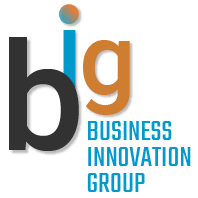This article was co-written with Anush Naghshineh, Jenny Tsao, and David Turner.
Introduction: The Danger of Sweeping Cuts During an Inflationary Downturn
When the economy slows, unemployment rises, and prices increase, many companies often resort to making sweeping budget cuts. However, this broad and formulaic approach can undermine your competitive capability when you need it most.
Current economic indicators suggest we might be facing a difficult economy soon, with Federal Reserve Chair Jerome Powell warning that we may soon see “higher inflation and slower growth”. This type of economic environment requires a thoughtful approach to managing costs.
All-encompassing cuts might seem to be straightforward, but they often sacrifice investments crucial for your company’s future. Cost-cutting without a clear strategy can damage your company’s ability to grow when market conditions improve.
The companies that will thrive during a downturn are those that cut carefully using a scalpel rather than a chainsaw. Differentiating the expenses that drive competitive advantage from those that don’t enable you to emerge from economic struggles stronger.
The Difference Between Strategic and Reactive Cost Management
When inflation starts eroding margins, the instinct for many companies is to make blanket cuts across departments. But reactive cost-cutting is a blunt tool—it preserves cash in the short term but often damages long-term competitiveness. Strategic cost management, on the other hand, takes a surgical approach: identifying what to cut, what to protect, and what to invest in for resilience and growth.
A strategic mindset starts with visibility. That means evaluating which costs are truly fixed vs. discretionary, what directly supports revenue, and where operational inefficiencies lie. FRP Advisory, a UK-based firm known for helping organizations navigate financial complexity and restructuring, emphasizes that companies who adopt consistent, proactive cost reviews, especially during periods of inflation, outperform their peers over time. Their guidance highlights the importance of scenario-planning, cross-functional alignment, and ongoing cost-performance tracking.
In short: reactive cuts aim to survive the quarter. Strategic cost management aims to position the company for the next five years. The companies that navigate inflation successfully aren’t the ones that panic early; they’re the ones that pause, assess, and adjust deliberately.
Fixed Vs. Variable Costs: Reshaping Your Cost Structure for Flexibility
Businesses face the dual challenge of slowing growth and rising inflation, making strategic cost management critical for survival. Fixed costs represent a particular vulnerability as they remain constant regardless of production levels, creating dangerous profit squeezes when revenues decline. Organizations should conduct thorough audits to identify opportunities to convert fixed expenses into variable ones, for example, shifting from owned facilities to leased spaces with flexible terms, implementing pay-for-use technology solutions instead of significant capital investments, and exploring outsourcing for non-core functions. This reshaping of cost structure creates essential flexibility to scale expenses up or down in response to unpredictable economic conditions.
While cutting costs, companies must simultaneously make targeted investments that position them for long-term success when economic conditions improve. Priority areas should include digital transformation initiatives that reduce labor dependency, enhance operational efficiency, and improve customer experience; workforce development programs that upskill employees for changing market demands; and strategic acquisitions of distressed competitors or complementary businesses available at favorable valuations. Organizations that balance prudent cost-cutting with selective investment during inflationary periods typically emerge stronger, with improved market positions and operational structures better suited to the new economic reality.
Counter-Intuitive Investments: Where Spending More Saves Money During Inflation
It sounds backward. Spending more when everything costs more. But some of the smartest moves during inflation are investments that prevent even higher costs down the road. These are the decisions that separate companies that merely survive from those that quietly gain market share.
Take preventive maintenance, for example. According to Brightly Software, a Siemens-owned operations management firm serving sectors like manufacturing, healthcare, and public infrastructure, companies that shift from reactive to proactive maintenance not only reduce costly downtime but improve asset longevity. These are both critical when inflation drives up the price of replacement parts and labor. Small, planned investments often prevent large, unexpected disruptions.
The same logic applies to strategic operational improvements. In a recent analysis by L.E.K. Consulting, a global management firm known for guiding Fortune 500 and PE-backed companies through complex cost challenges, leaders were urged to look beyond immediate savings and consider where targeted spending, such as on supply chain resilience, pricing optimization tools, or customer analytics. It could generate long-term ROI. In many cases, these counterintuitive investments protect margins more effectively than cuts.
Another overlooked investment? Retention. While it may seem cost-effective to slow raises or hiring, replacing experienced team members in a tight labor market (with rising wage floors and shrinking talent pools) can cost significantly more. Keeping top performers engaged through meaningful work, growth opportunities, or well-placed incentives isn’t indulgent—it’s a hedge against churn-related expenses.
Inflation punishes inefficiency and shortsightedness. It rewards smart, focused bets. The key is knowing when to spend and having the discipline to follow through when instinct says to cut.
Automation Opportunities: Using Technology to Offset Wage Inflation
Wage inflation is one of an inflationary economy’s most immediate and visible impacts. As labor costs rise, businesses must seek ways to maintain output without proportionally increasing payroll. One powerful lever is automation both in front-line operations and back-office functions.
Companies are increasingly adopting robotic process automation (RPA) to handle repetitive administrative tasks such as invoicing, payroll, data entry, and compliance tracking. These solutions can significantly reduce the burden on human staff and allow them to focus on higher-value activities. According to Deloitte’s 2023 Global Automation Survey, organizations implementing RPA saw an average cost savings of 25% within the first year.
In customer-facing roles, AI-powered chatbots and self-service tools can reduce reliance on large customer support teams while enhancing service availability and consistency. Similarly, in logistics and manufacturing, automation tools such as AI-driven inventory management or robotic systems can reduce manual labor requirements and optimize throughput.
Careful prioritization is key to maximizing ROI on automation during inflation. Businesses should target high-volume, low-complexity tasks where automation can quickly reduce labor hours or error rates. This offsets wage increases and enhances resilience by reducing dependence on scarce labor pools.
Outsourcing Evaluation: Calculating True ROI In an Inflationary Environment
Outsourcing is often seen as a cost-saving tactic, but its effectiveness must be re-evaluated during periods of inflation. Choosing the lowest-cost vendor can be a trap if quality, speed, or strategic alignment suffers.
To calculate true ROI on outsourcing, companies should factor in the total cost of ownership, which includes transition costs, service-level risks, contractual flexibility, and the vendor’s ability to scale or adapt during turbulent periods. For example, short-term savings may result in long-term losses if a customer service outsourcing partner cannot scale with seasonal demand or is slow to adopt new technologies.
High-inflation environments can also increase vendor costs, which are often passed on to clients. To mitigate this, companies should negotiate inflation-adjusted clauses in contracts, conduct frequent vendor performance reviews, and explore multi-vendor strategies to preserve leverage.
Outsourcing should not be limited to traditional areas like IT support or payroll. Functions such as digital marketing, procurement, or data analytics can now be outsourced to high-performing partners with niche expertise, giving companies access to best-in-class capabilities without adding headcount.
In the end, outsourcing during inflation isn’t just about cutting costs. It’s about strategic flexibility, scalability, and risk mitigation, ensuring every dollar spent works harder for the business.
Conclusion: Using Cost Discipline to Create Competitive Advantage
Strategic cost management can become a competitive strength. Cost-cutting should be more than trimming excess. It should be about strategically using resources to drive business growth. Smart businesses prioritize spending on areas that drive real business impact and invest in results-driven initiatives.
Successful companies position themselves to withstand economic turbulence through deliberate planning and careful analysis. This includes rigorously modeling worst-case, middle-case, and base-case planning scenarios for effective decision-making.
Cost optimization should be viewed as continuous improvement, not as a one-off effort to trim costs during a financial crisis. Only about 11% of organizations can sustain cost savings for three consecutive years. Those that do typically engage leaders cross-functionally, with each function contributing a plan that identifies opportunities and tradeoffs.
The discipline developed during hard times becomes a lasting advantage when growth returns. Companies that master strategic cost management during difficult times emerge stronger, more agile, and better positioned to capitalize on new opportunities as economic conditions improve.

